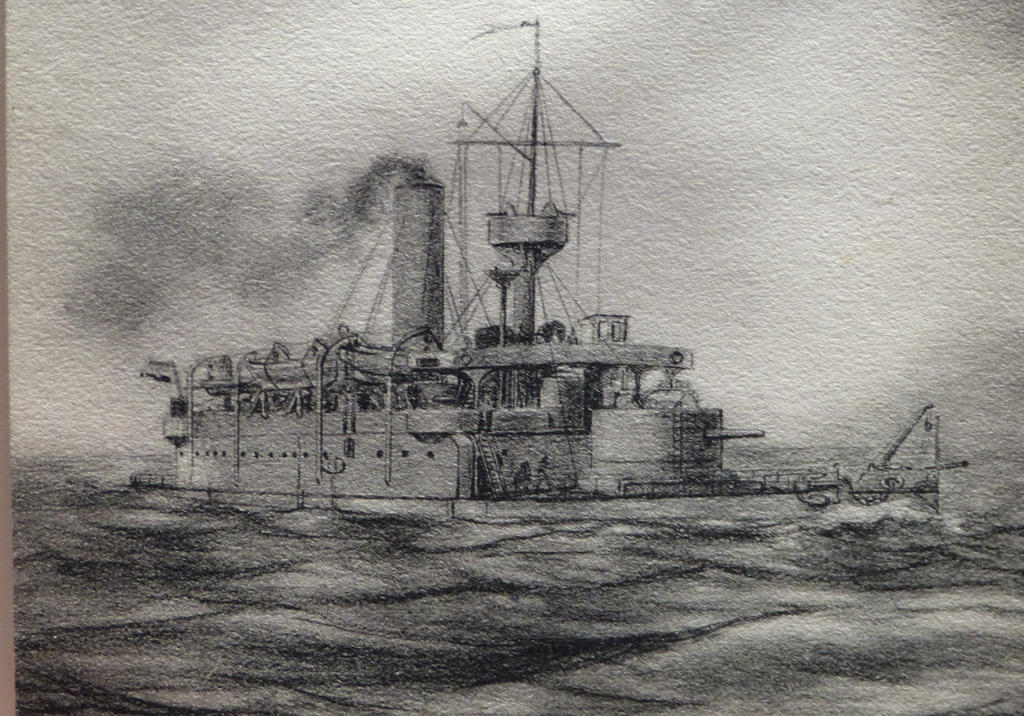Source
Vice admiraal Norman MacLeod.
Chapter VI. De Marine, published in “Eene Halve Eeuw [1848-1898].
Her main purpose was to defend the tidal inlets and especially the so-called Zuiderfrontier. The order to her building at the Kon. Fabriek van stoom- en andere werktuigen te Amsterdam was given in July 1889. However this factory was liquidated and the order given to the navy yard Amsterdam while the shipyard Kon. Mij. De Schelde at Flushing would manufacture the engines and boilers. She was laid down on 24 September 1890. launched on 21 November 1891, trial on 7 October 1893 and commissioned at Hellevoetsluis on 1 March 1894. Stationed in February 1904 at Flushing when the Netherlands wanted to preserve her neutrality during the war between Russia and Japan. In 1907 was she temporarily stationed at Rotterdam during the strikes in the harbour. Decommissioned on 21 August 1907 for major repairs at the navy yard at Hellevoetsluis and on 2 April 1908 brought to Flushing to receive three new Yarrow boilers. These water tube boilers no.’s 102-104 were ordered on 27 December 1907, she arrived at Flushing on 3 April 1908 and departed on 3 November. On 1 April 1913 again decommissioned but the repairs were stopped on 28 November. The morning edition of the newspaper Algemeen Handelsblad dated 10 December 1914 reported her sale at the navy yard at Hellevoetsluis a day earlier for ƒ 39.715 to the N.V. Frank Rijsdijks Scheepsslooperij at Hendrik-Ido-Ambacht.
With a displacement of 2.479 ton were her dimensions 70,00 x 1352 x 4,55 metres. The engines and 3 Scottish boilers supplied 2.315 ihp allowing while driving 2 screws a speed of 12,5 miles. Coal bunker capacity 110 ton. The armament consisted original of 2-21cm guns, 1-17cm gun, 4-5cm guns, 3-37cm guns and 2 torpedo guns. In 1908 were both torpedo guns removed and in 1913 was the 17cm gun (placed aft) replaced by 1-15cm gun. The armour consisted of a 100-120mm thick belt, a 50-75mm thick deck while the gun turret and conning tower were protected by 280 mm thick armour. Her crew numbered 159 men. Costs when for the first time commissioned ƒ 1.960.038,00.

